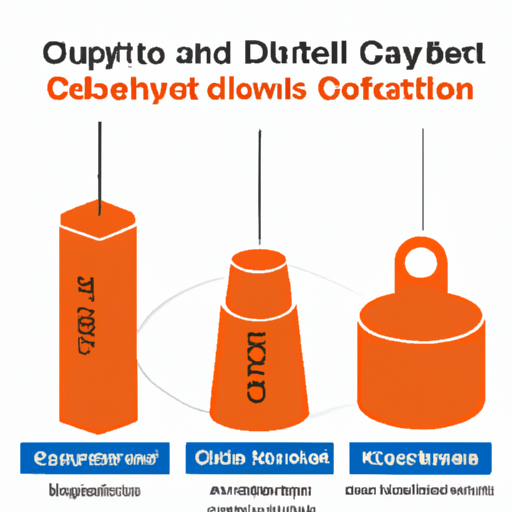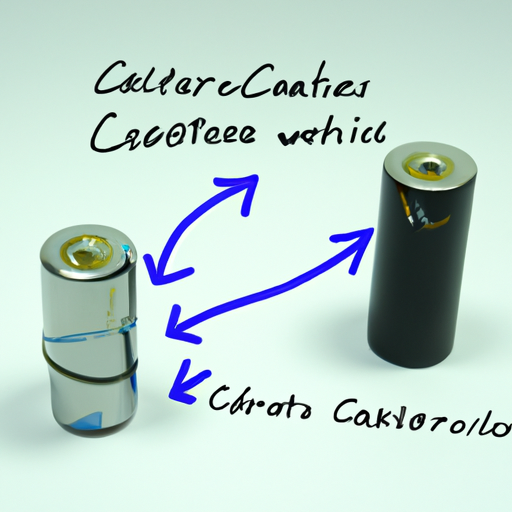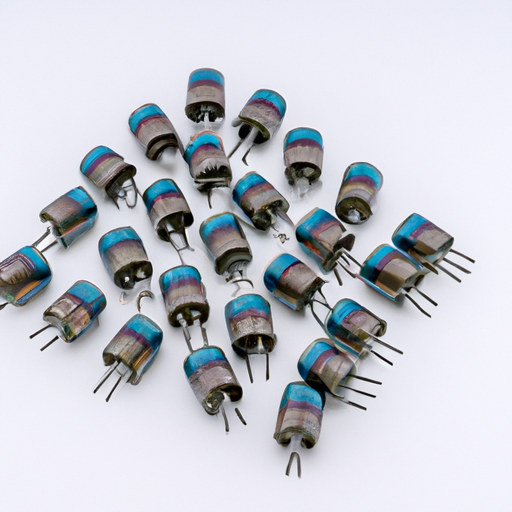How should off-the-shelf coupling capacitors be selected?
How Should Off-the-Shelf Coupling Capacitors Be Selected?
I. Introduction
In the realm of electronic circuits, coupling capacitors play a pivotal role in ensuring the proper functioning of various components. These capacitors are designed to allow alternating current (AC) signals to pass while blocking direct current (DC) signals, thereby facilitating signal transmission and isolation. The selection of the right coupling capacitor is crucial for the performance and reliability of electronic devices. This article aims to provide a comprehensive guide on how to select off-the-shelf coupling capacitors, covering their functions, key parameters for selection, application considerations, sourcing, and testing.
II. Understanding Coupling Capacitors
A. Function of Coupling Capacitors in Circuits
Coupling capacitors serve two primary functions: AC coupling and DC blocking. AC coupling allows AC signals to pass from one stage of a circuit to another while preventing DC bias levels from affecting subsequent stages. This is particularly important in amplifiers, where the DC offset can distort the signal. Conversely, DC blocking ensures that DC components do not interfere with the operation of sensitive components downstream.
B. Types of Coupling Capacitors
There are several types of coupling capacitors, each with its own characteristics and applications:
1. **Ceramic Capacitors**: Known for their small size and low cost, ceramic capacitors are widely used in high-frequency applications. They exhibit low ESR and are suitable for decoupling and coupling applications.
2. **Film Capacitors**: These capacitors offer excellent stability and low loss, making them ideal for audio and precision applications. They are available in various dielectric materials, such as polyester and polypropylene.
3. **Electrolytic Capacitors**: Typically used in applications requiring high capacitance values, electrolytic capacitors are polarized and should be used with caution in AC coupling applications.
4. **Tantalum Capacitors**: Known for their high capacitance-to-volume ratio, tantalum capacitors are stable and reliable, making them suitable for compact designs.
III. Key Parameters for Selection
When selecting coupling capacitors, several key parameters must be considered:
A. Capacitance Value
The capacitance value is critical in determining how effectively a capacitor can couple AC signals. The required capacitance can be calculated based on the circuit's impedance and the desired cutoff frequency. A larger capacitance value allows lower frequency signals to pass, while a smaller value is suitable for higher frequencies.
B. Voltage Rating
The voltage rating of a capacitor indicates the maximum voltage it can withstand without failure. It is essential to select a capacitor with a voltage rating higher than the maximum voltage it will encounter in the circuit. Factors such as transient voltages and environmental conditions should also be considered when determining the appropriate voltage rating.
C. Equivalent Series Resistance (ESR)
ESR is a measure of the internal resistance of a capacitor, which can affect its performance, especially in high-frequency applications. A lower ESR is generally preferred, as it minimizes power loss and improves signal integrity. When selecting a capacitor, it is essential to consider the ESR in relation to the circuit's requirements.
D. Frequency Response
The frequency response of a coupling capacitor is crucial for ensuring that it performs well across the intended frequency range. Capacitors have a frequency-dependent behavior, and their impedance decreases with increasing frequency. Assessing the frequency response helps in selecting a capacitor that meets the specific needs of the application.
E. Temperature Coefficient
The temperature coefficient indicates how a capacitor's capacitance value changes with temperature. In applications where environmental conditions vary significantly, selecting a capacitor with a suitable temperature coefficient is essential to maintain performance stability.
IV. Application Considerations
A. Circuit Design Requirements
Understanding the specific application is vital when selecting coupling capacitors. Different circuits may have unique requirements regarding capacitance, voltage, and frequency response. Matching the capacitor's characteristics to the circuit's needs ensures optimal performance.
B. Size and Form Factor
The physical dimensions and mounting options of a capacitor can significantly impact PCB design and layout. Smaller capacitors may be preferred in compact designs, while larger capacitors may be necessary for higher capacitance values. It is essential to consider the available space and the mounting method when selecting a capacitor.
C. Reliability and Lifespan
The reliability and lifespan of a capacitor are critical factors in ensuring long-term performance. Factors such as temperature, voltage stress, and ripple current can affect a capacitor's lifespan. Selecting capacitors with appropriate ratings and considering their operating conditions can enhance reliability.
V. Sourcing Off-the-Shelf Coupling Capacitors
A. Identifying Reputable Suppliers
When sourcing off-the-shelf coupling capacitors, it is essential to identify reputable suppliers. A supplier's reputation can provide insights into the quality and reliability of their products. Evaluating supplier offerings, including product range and customer support, can help in making informed decisions.
B. Comparing Specifications
Datasheets are invaluable resources for comparing capacitor specifications. They provide detailed information on capacitance, voltage rating, ESR, and other critical parameters. Understanding manufacturer ratings and tolerances is essential for selecting the right capacitor for the application.
C. Cost Considerations
While cost is an important factor, it should not be the sole consideration when selecting coupling capacitors. Balancing cost with performance is crucial, as investing in higher-quality capacitors can lead to better long-term value and reliability. Engineers should consider the total cost of ownership, including potential replacement costs, when making decisions.
VI. Testing and Validation
A. Importance of Testing Coupling Capacitors
Testing coupling capacitors is essential to ensure that they meet the required specifications and perform as expected in the circuit. Identifying potential issues before deployment can save time and resources in the long run.
B. Common Testing Methods
Several testing methods can be employed to validate coupling capacitors:
1. **Capacitance Measurement**: This method involves measuring the actual capacitance value to ensure it aligns with the specified value.
2. **ESR Testing**: Measuring the ESR helps assess the capacitor's performance, particularly in high-frequency applications.
3. **Frequency Response Analysis**: This analysis evaluates how the capacitor behaves across different frequencies, ensuring it meets the application's requirements.
VII. Conclusion
Selecting the right off-the-shelf coupling capacitors is a critical aspect of electronic circuit design. By understanding their functions, key parameters, and application considerations, engineers can make informed decisions that enhance circuit performance and reliability. Careful selection of coupling capacitors not only ensures optimal signal transmission but also contributes to the overall success of electronic designs. As technology continues to evolve, prioritizing capacitor selection will remain essential for engineers and designers striving for excellence in their projects.
VIII. References
A. Suggested readings and resources for further information on coupling capacitors and their applications.
B. Links to relevant industry standards and guidelines that provide additional insights into capacitor selection and testing methodologies.
By following this guide, engineers can navigate the complexities of coupling capacitor selection and ensure their designs meet the highest standards of performance and reliability.





